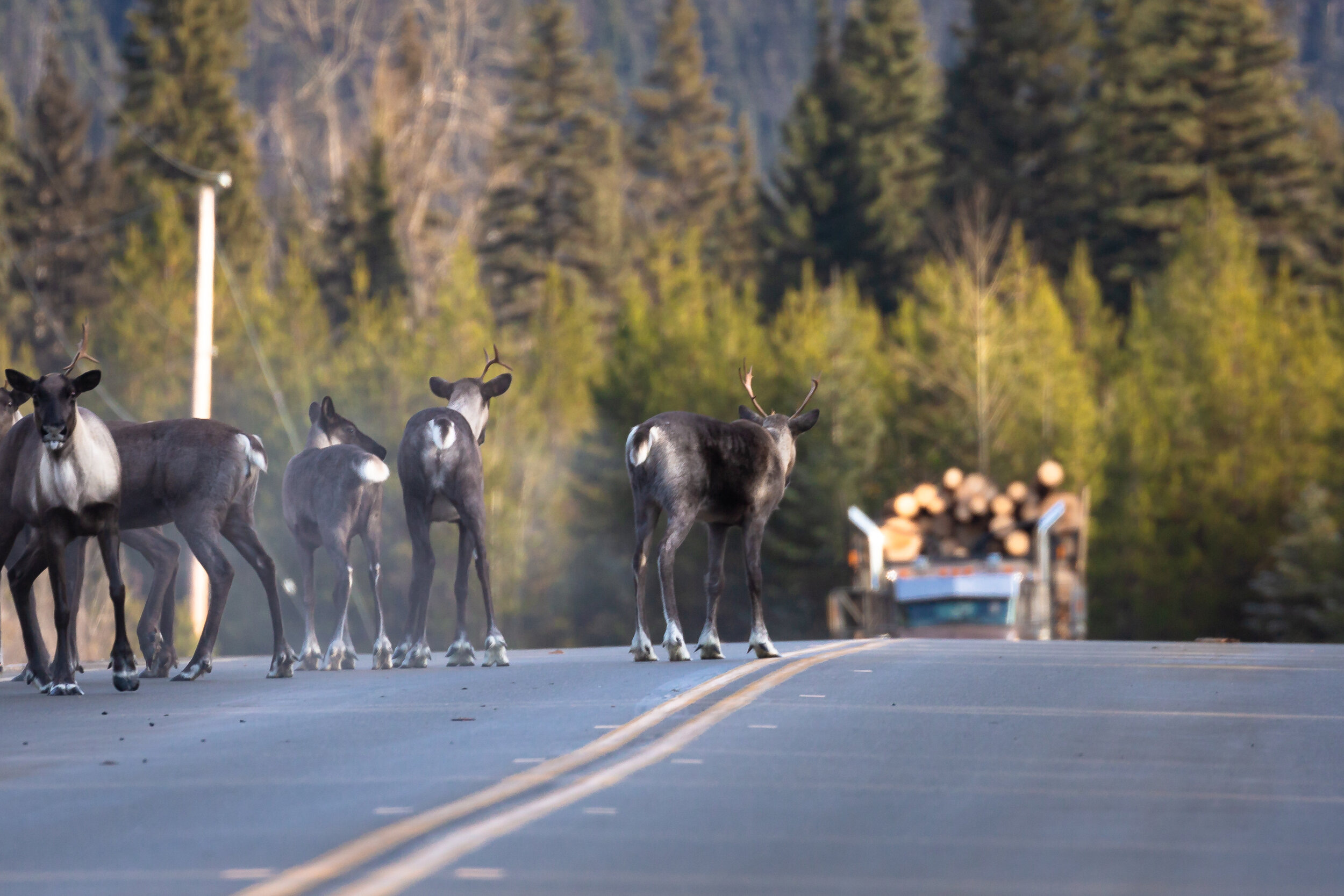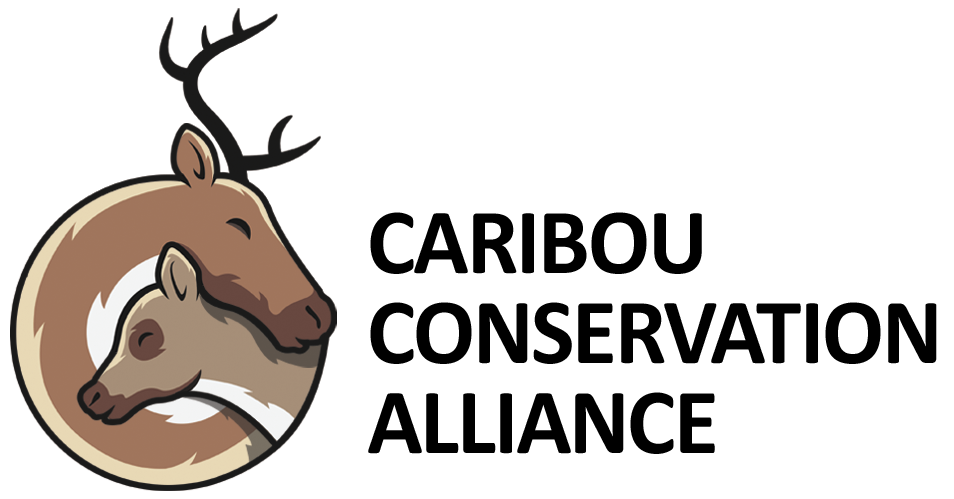
Caribou Fact Sheet
Ecology
Caribou and reindeer are the same species, Rangifer tarandus.
There are several subspecies of caribou and reindeer.
Caribou subspecies: Woodland caribou, Peary caribou, Porcupine caribou (or Grant’s caribou), and barren-ground caribou.
Reindeer subspecies: Forest reindeer, tundra reindeer (or mountain reindeer), and Svalbard reindeer.
Reindeer are native to northern Eurasia and are largely semi-domesticated. Caribou are native to North America and have never been domesticated. Caribou and reindeer are found in arctic, subarctic, boreal, and sub-boreal areas.
Caribou and reindeer populations are declining globally.
The IUCN Red List of Threatened Species categorized Rangifer tarandus as Vulnerable in 2015. Globally, the species has sustained a 40% overall decline over the last 10-30 years.
In Canada, where the conservation status is assessed for each caribou population, many populations are listed as Threatened or Endangered.
Caribou became extinct in the contiguous USA in 2019.
In the wild, caribou typically live up to 10-15 years.
Appearance and adaptations
Caribou and reindeer are the only deer species in which both males and females have antlers.
Antlers are composed of bone, cartilage, fibrous tissue, nerves, blood vessels and skin. The skin, or velvet, sheds once the antlers are done growing.
They use their antlers to find food under the snow and defend themselves.
Males shed their antlers in November after the breeding season.
Females shed theirs in May, shortly before calving.
Caribou are high performance athletes.
They can reach 80km/h when sprinting.
They can swim across rivers as fast as 10 km/h.
Males and females are sexually dimorphic.
Males are much bigger than females, with some reaching almost 600 lbs.
Males have much larger and more branched antlers than females. The highest number of points ever reported on a male is 44!
Caribou and reindeer are perfectly adapted to life in cold climates.
Their warm coat has two layers: A dense undercoat of ultra-fine fur and an overcoat of longer, hollow guard hairs.
Their hairy noses and intricate nasal structure help minimize heat loss when exhaling and keep caribou warm even in the coldest of climates.
Large, sharp hooves allow them to walk softly on top of the snow (like snowshoes!) and hair between their toes help them gain traction on the ice.
Their feet make a “clicking” sound every time they take a step. This noise helps them stay together when visibility in a blizzard or thick fog is poor.
A long dewclaw serves as an extra hoof to help them navigate rugged terrain.
Their tapetum lucidum, the layer of cells behind the retina in the eyes that helps animals see in dim light, changes color throughout the year. It is golden in the summer and turns blue in the winter. This color change is induced by seasonal variation in daylight.
Diet and life cycle
Caribou are herbivorous. During the summer, when food is plentiful, they eat grasses, leaves, mushrooms, and flowering plants. Once winter hits, their diet consists mainly of lichen, small shrubs and sedges.
An adult reindeer eats an average of 9-18 lbs of vegetation a day.
The breeding season, or rut, spans from September to October.
Males mate with the several females in their harem.
Gestation lasts approximately 7.5 months, and calves are born in May and June. Females typically give birth to a single calf. Calves stand within 30 minutes of birth and move with the herd within a day.
Some subspecies migrate over impressive distances while others only move a few kilometers seasonally.
Barren-ground caribou have the longest migration of all land mammals!
